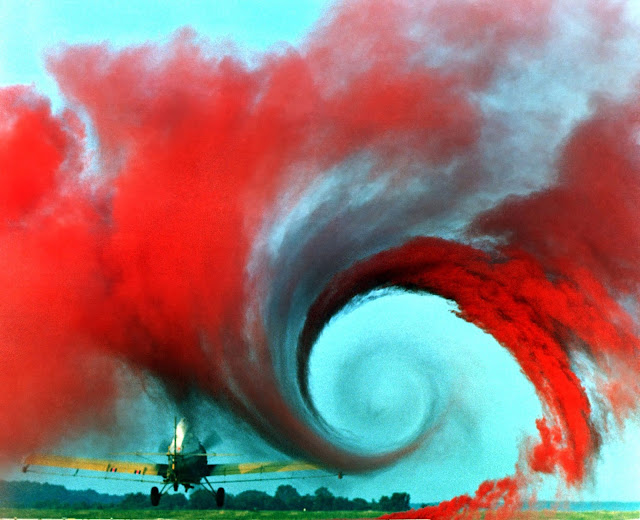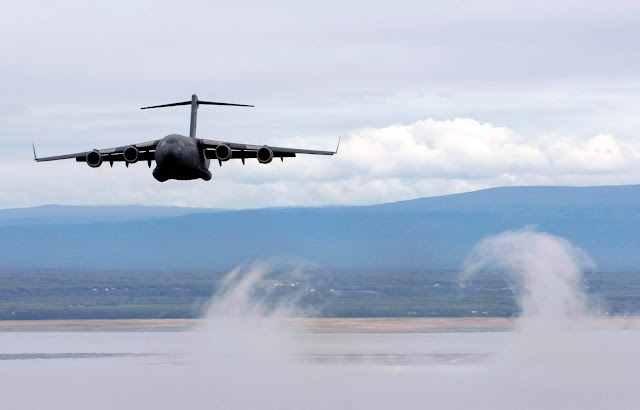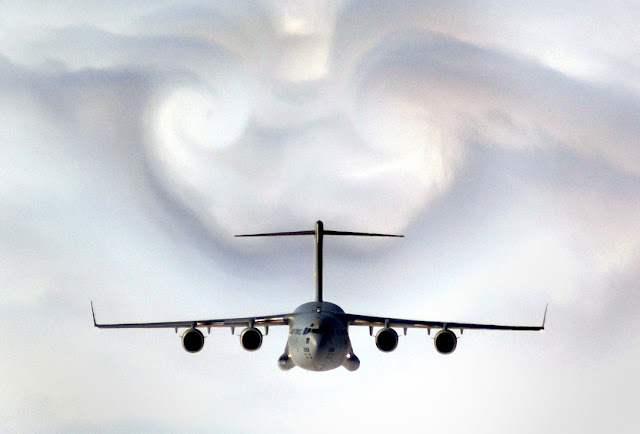aircraft
Turbulence
wake
What is wake turbulence?
Why is it necessary for the aircraft to have some minimum separation between each other while they are flying or they are approaching a runway to land? There are many factors which determine the minimum separation required between two aircraft to have a safe flight. The primary reason for the requirement of a minimum separation is to avoid wake turbulence. This article would provide the analysis of wake turbulence formation and its avoidance.
How is wake turbulence created?
Lift is generated through the wings because of the pressure differential between the lower and the upper surface of the wing. Air pressure below the wing is higher than air pressure above the wing, which in turn generates the lift required by the aircraft to fly in the air.
If the behavior of flow at the wingtips is analyzed, it could be observed that the high-pressure air from the lower surface would try to come to the upper surface by following a circular path. This would result in wing tip vortices which would trail behind the wing. While the aircraft is generating lift, at the same time it also results in wingtip vortices.
The intensity of these vortices is directly dependent upon the magnitude of lift generated by the wing. Therefore the intensity of wingtip vortices varies with angle of attack, weight, and speed of the aircraft. These vortices are strongest when aircraft is heavy, slow and in a clean configuration.
As these vortices are invisible pilots must learn to visualize and avoid them. If a smaller aircraft has to land behind a heavier one, it must always fly above the flight path of the heavier aircraft to avoid the encounter with wake turbulence. It should be ensured that the touchdown point of the aircraft is aft of the aircraft which has previously landed.
Sometimes the wake turbulence created by an aircraft during take-off may travel to another runway due to cross-winds. Therefore the crosswinds must also be analyzed before taking off.
Different wake turbulence weight categories:
Wingtip vortices or wake turbulence has a sink rate (that is the rate at which it comes down) of about 400 feet per minute. These vortices come to rest at about 800 feet below the flight path of the aircraft.
Different aircraft would require different minimum separation, therefore it is necessary to categorize the aircraft based upon their weight. Lightweight category i.e. category L is for aircraft weighing less than 7 tons. Medium weight category is for aircraft weighing between 7 to 136 tons. Aircrafts weighing more than this are categorized as heavy. There is yet another category which used for aircraft with a take-off weight of about 550 tonnes and this category is called super heavy category.
ICAO (International Civil Aviation organization) regulates the minimum separation between two aircraft. The minimum separation depends upon the weight categories of the aircraft. If a medium weight category aircraft follows a heavy aircraft then there must be a separation of 5 nautical miles. The minimum separation required could even go up to 8 nautical miles if a lightweight category aircraft follows a heavy aircraft.
When a heavy aircraft follows a lightweight category aircraft the minimum separation required is only 4 nautical miles. It is not only the duty of an ATC controller to guide the airliner about the wake turbulence but it is also a duty of the pilot to ensure that the aircraft is flying at a safe distance.
Therefore it could be concluded that wake turbulence is the primary factor determining the minimum gap required between the two aircraft to fly safely. If any aircraft encounters this turbulence then it would roll and could even cause a crash if not controlled properly.
There was a crash caused due to wake turbulence on 12th November 2001. This accident was accounted for the excessive rudder input provided to the American Airlines Flight 587 in response to the wake turbulence caused by Japan Airlines Boeing 747.
Thanks for reading!
Suggested article: How aircraft weather RADAR works?









